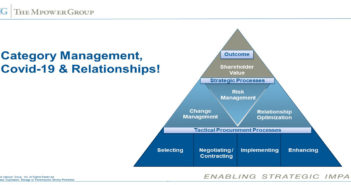70 cents and $1.00 – those are the prices of the two items that may have had the greatest impact on the response to the pandemic – both in lives lost and economically. The two items are the N95 face masks which pre COVID were going for 70 cents and the nasal swab needed for testing which was around a dollar – please don’t quote me on these numbers but they are accurate enough for my point. You wonder how they were sourced and warehoused and distributed etc. etc. and what is causing the shortage and is there really any solution to handle situations like this?
Let me address the last question first – situations like this are Predictable and Inevitable so that means that we are doomed to have many more situations like this without a solution in place? That is a very dark and dystopian future ☹ -☹ -☹
It would not be an exaggeration to assume that the mask is one of the cheapest items in the whole medical response value chain (MRVC – a totally made up acronym) and soon to be part of the monthly order on Amazon for all – maybe even the world. Yet a shortage of the cheapest item has purportedly led to a major impact on the front lines of the medical response team (the people) – which is the MOST CRITICAL link. We are losing medical professionals from the most critical supply chain because of the mask. That caused a major issue and still does in the early stages of the response. And now, if in fact the reopening of the economy is a function of people wearing masks outside of the house for the foreseeable future, that mask shortage is going to be even more critical.
There is a similar story on the testing front. Regardless of the actual testing capacity, one of the most critical items currently is the Nasopharyngeal (NP) swab. Again, similar story. The most inexpensive item in the testing supply chain has become the biggest bottleneck. So clearly something is not right in terms of planning for this event. I think we all must acknowledge that while looking for a permanent global response is noble; it may also be futile. At the same time, we also must acknowledge that anything less than a national response is also futile. Imagine asking each organizational unit in your company to be responsible for their own cyber security instead of that being a corporate responsibility? Or each of them to come up with their own employee benefits program and implementing them? And unless the planning and coordination happens at the highest point in the hierarchy, the leverage is enjoyed by the suppliers because lower levels in the hierarchy end up competing against each other (every state doing their own thing). Conversely, the leverage is with the buying side if it is consolidated AND sourced during normal times and not during the emergency. So, using the mask and swab as metaphors, we must have a Supply Chain/Category Management strategy that can flex up a lot, lot faster than today. The lead time for the response Supply Chain to flex up can AND must be drastically reduced. That means a combination of warehousing (National Reserve) and preidentified ancillary industries that are already identified and contracted with and can switch rapidly to support the response Supply Chain (I’m clearly over simplifying here).
We tackled the exact similar situation in the Utility industry where our challenge was to reduce the lead time for large scale Transformers during the time of a national emergency – to shorten the lead time to flex up the Supply Chain!. We ended up with a semi National strategy of aggregating the risk management and thus reducing the lead time for the response Supply Chain significantly while maintaining the leverage on the buy side – IT CAN BE DONE!! (perhaps the topic of a future blog with details). This is why we have been insisting on the focus on the Strategic Processes for many years.

Our only way to play offense is to apply human intelligence to the information we are gathering and use it against this and the Predictable and Inevitable future viruses or re-occurrence of this one-which now the Director of the CDC is saying will happen this fall (Inevitable and the When identified) and that the impact will be worse (Predictable). . Otherwise that dystopian view may become a reality and for want of a nail, the kingdom will be lost.
This is also why a number of the 2020 trends we identified are sadly turning out to be prophetic:

